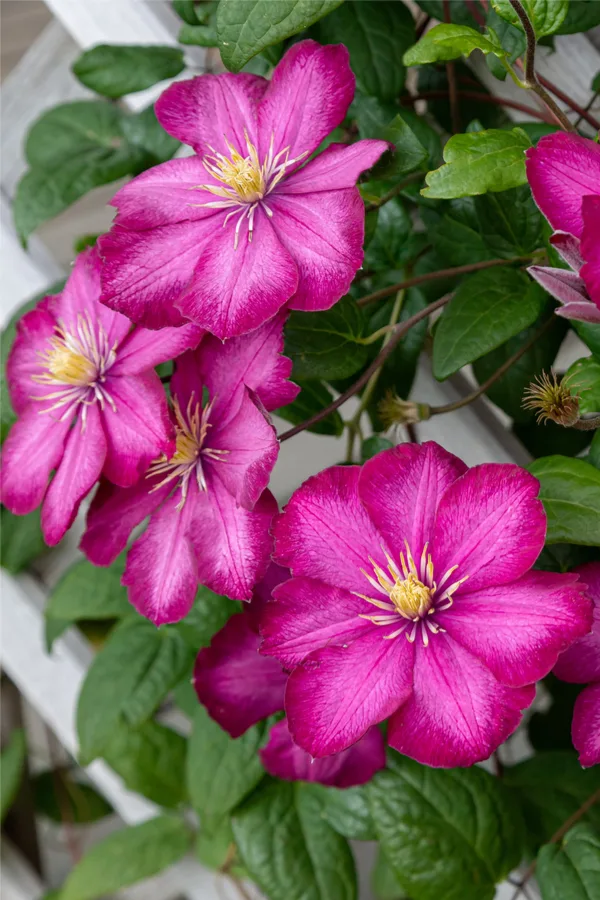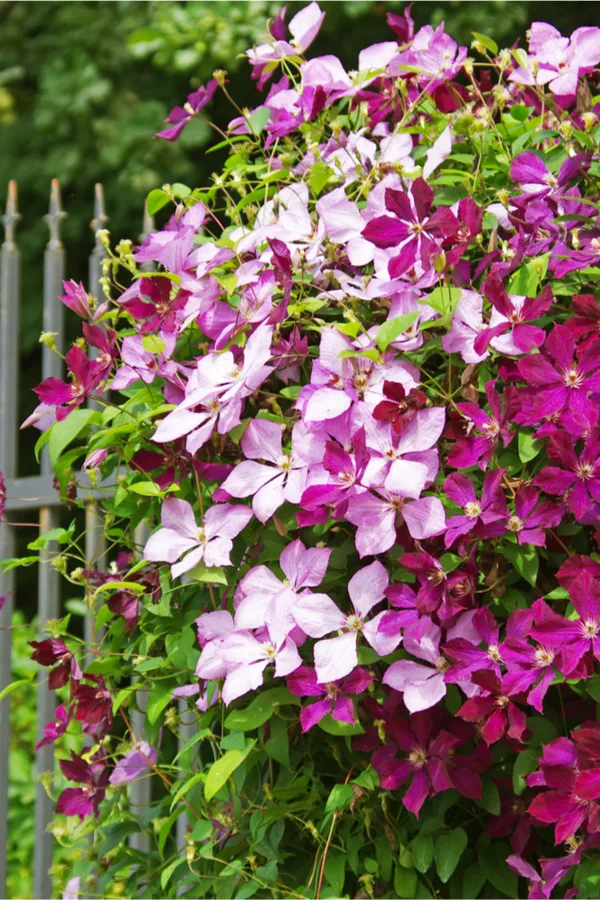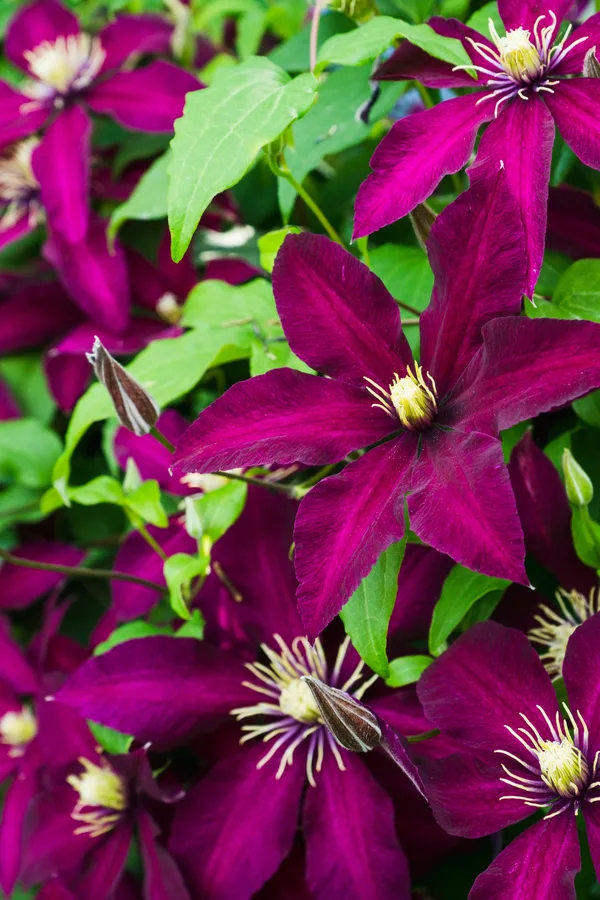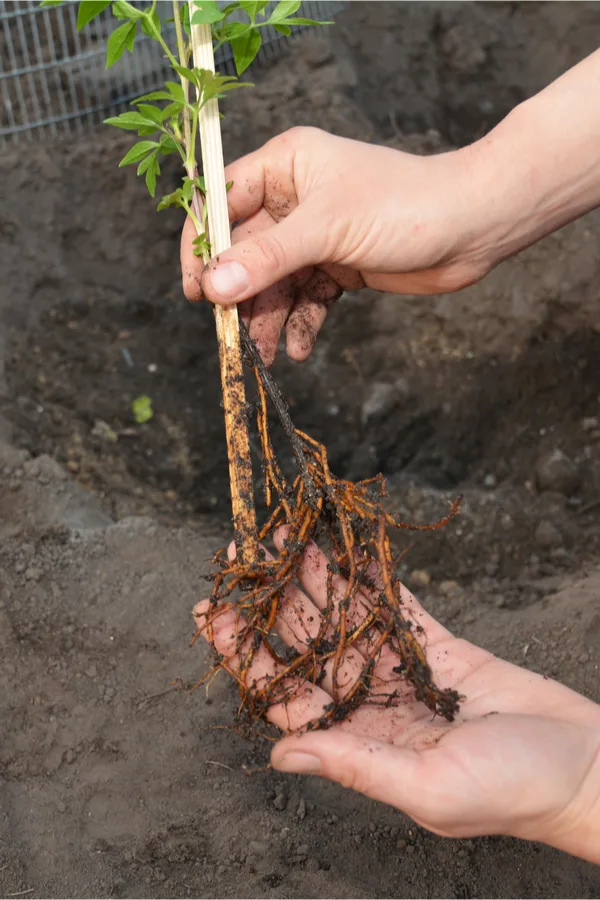Growing clematis is a great way to add vertical foliage and stunning flowers to your landscape. And best of all, flowers that come back stronger year after year, all with little work!
Clematis is a beautiful vining perennial with loads of colorful flower power. Perfect for adding long-term interest to arbors, trellises and fence lines, its vines can last for twenty years or more with little problem.
Clematis varieties can be found in a huge range of flowering styles, colors and lengths. Although most well known for large varieties that produce gigantic star-shaped flowers, clematis vines can also be found blooming in many smaller shapes, sizes and styles as well.

And can those blooms ever come in wide range of colors! Flowering clematis can be found in bright hues of purple, lavender, pink, red, white and yellow – along with a whole slew of variegated versions. Each with their own foliage pattern and blooming time as well.
Although most clematis perennials bloom in late spring, others produce their magnificent colors in the summer or fall. There are even a few varieties of clematis that flower more than once each season.

Selecting The Right Variety of Clematis – How To Grow Clematis
Finding the right variety of clematis comes down to choosing the best vine to fit your need and growing zone.
Some clematis varieties grow upwards of 10 to 25 feet or more in length. Others, meanwhile, reach only 2 to 4 feet when fully mature. This is one time when reading the plant’s instructions and labels are a must!
For large structures, or long, extended fence lines, selecting a more traditional long-vine style is the way to go. Clematis vines such as Sprinkles Clematis – Rosy Lavender grow 10′ or more. These can easily climb up large vertical structures to fill any space.
But for smaller fences or short vertical structures, selecting a mid-size vine vine such as Daniel Deronda Clematis is a better fit. With it’s double set of purple blooms that flower in the spring and fall, the 3′ to 5′ vine fills smaller spaces well.

How To Plant, Maintain & Grow Clematis
Choosing The Right Location
Clematis need full sun to bloom at their maximum capacity. So choose a location that gets at least 8 hours of sunlight each day.
Nearly all clematis varieties are climbers. Picking a location near a fence, wall, arbor, or a pergola allows them to climb and best display their showy blooms.
When planting near a structure, make sure plants will still receive enough sun. Do not plant where the structures posts or overhang completely shades the plant. On larger structures, you may need to install wire fencing or mesh to allow the vines to climb easier.

Clematis will not grow to full length maturity during its first growing season. It’s important to keep in mind its potential future growth when planting or adding other structures to your landscape.
Planting Clematis
Clematis prefers rich, fertile and well-drained soil to perform at its peak. As a perennial, it’s important to provide the planting space with plenty of nutrients for their long-term survival.
Dig planting holes two to three times the size of the root ball, and amend the soil with generous amounts of compost. Mix the compost and soil back into the hole at a 50/50% rate for best results.
When planting, place the crown about an inch below the soil to allow the root system to become better established. If placed at surface level, the roots tend to stay on top and not develop enough staying power.

Clematis prefer the soil to be more on the cool side, so mulching is a must. For best results, mulch to a depth of at least 3 inches with hardwood bark or shredded leaves. Add a few more inches in late fall to help protect through winter.
Growing Climbing Clematis – Long Term Maintenance
Other than water and mulch, clematis needs very little care for the first year or two after planting.
Mulching during the growing season helps keeps plants cool. And winter mulch helps keeps the roots protected from harsh freezing and thaws.
During the first few years of growth, pruning is usually unnecessary. The plants use this time to establish strong roots. But depending on their variety, once mature, clematis need to be pruned differently, and at varying times of the year.

Clematis that bloom from the previous year’s growth should be pruned in late summer after blooming. On the other hand, clematis varieties that grow up new from their base each year can be pruned to around 12″ in early spring. All before the new growth begins to appear.
One thing is for sure, clematis can certainly add lasting vertical beauty to your landscape. And if you are looking for more climbing perennials, check out our article 3 Climbing Perennials For Your Landscape on the blog. And for even more tips on growing clematis, be sure to see: What To Do With Clematis After It Blooms – And How To Make It Bloom Again!
Here is to adding some high-reaching interest to your home this year, and enjoying it for years to come!
This Is My Garden is a website dedicated to spreading the love and knowledge of gardening around the world. We publish two new garden articles each week. This article may contain affiliate links.
